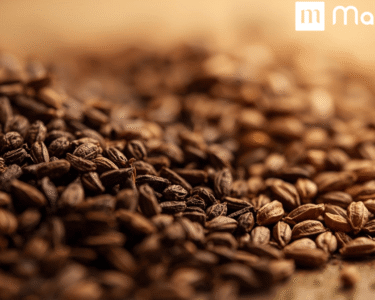Yoga is a road to a balanced and better life, and it’s much more than just a physical practice. Hasta Uttanasana is one asana that skillfully blends breath awareness, balance, and stretch. After Pranamasana (Prayer Pose), this pose usually comes next in the Surya Namaskar practice.
In Sanskrit, “Hasta” means “hands,” “Uttana” means “stretch” or “intense stretch,” and “Asana” means “pose.” These three words combine to form the name Hasta Uttanasana. When combined, they form the Raised Arms Pose, which improves posture, expands lung capacity, and stretches the entire body.
Hasta Uttanasana Steps and Benefits
How to Perform Hasta Uttanasana : Step by Step Guide
Performing the raised arms pose properly can help you gain maximum benefits by this simple yet powerful stretch :
Step 1: Begin Surya Namaskar with Pranamasana
- Being the first step of divine Namaskaran, pranamasana prepares and warms you up for Hasta Uttanasana.
- It involves standing tall in Tadasana with feet joined together.
- Now join your hands in front of your chest, coming to the prayer pose.
- Keep your spine erect and shoulders relaxed.
Step 2: Raise your Arms
- Inhale your breath, and stretch your arms forward and then upward
- Make sure that your biceps are adjacent to your ears.
Step 3: Bend Backwards Slightly
- Soon after raising your arms, hold the position and then push your pelvis forward.
- The next step involves bending your upper body backwards.
- Make sure that your knees are straight and avoid making them too stiff.
Step 4: Stretch Upwards
- Stretch your body as much as possible, feel the stretch from your heels to your fingertips.
Step 5: Hold the Current Position
- Yes, try to maintain the existing pose with little backward bend and arms stretched.
- You need to breathe normally while holding the pose
- Also keep your gaze slightly upwards while holding
Step 6: Exhale and Release
- This is the last step of Hasta Uttanasana where you need to release yourself.
- Come back to Pranamasana and exhale the breath you have been holding.
- Continue with the next pose in your sequence or repeat as desired.
Hasta Uttanasana Benefits
Practicing raised arms pose daily involves numerous physical and mental health benefits. Let’s explore why you need to make this pose a part of your routine :
Improves Digestion
The backward bend during this pose, massages the abdominal organs, stimulates digestive system and can help you alleviate gut issues like mild constipation and bloating.
Strengthens the Back and Shoulders
The pose involves lots of stretching that results in lengthening of the back muscles, which results in honing and strengthening of the spine and shoulder muscles. Involving in this pose everyday can reduce the risk of back pain
Boosts Instant Energy and Mood
Yes ! You heard that right, Hasta Uttanasana stimulates the nervous system and revitalizes the body filling you with instant energy and making you active throughout the day. It also helps in uplifting your mood and shaking off that morning drowsiness.
Enhances Flexibility
Hasta Uttanasana pose provides you with excellent stretch for the spine, shoulders, and abdomen. Practicing this pose regularly will definitely improve your flexibility, making the body more supple.
Expands Chest and Lungs
The posture involves raising the arms and lifting the rib cage, which expands the lung capacity. This results in improving the oxygen intake and overall respiratory health.
Improve Posture
The posture aligns your spine and counteracts slouching of the chest. It is very effective in improving your posture while giving you a naturally erect posture.
Variations Related to Hasta Uttanasana
Although the basic version suits everyone and is very easy to perform, you can still experiment with other variations of this pose :
Deeper Backbend
This variation is for those who are yoga experts. Deeper backbend is all about intensifying the backbend by lifting the chest higher and bending backward. The pose involves taking support from the core for maintaining balance.
Hasta Uttanasana with hands apart
If you have limited flexibility in the shoulder, you can raise your arms and keep them slightly apart instead of palms touching. This reduces the chances of any sprains in the shoulders or arms.
Seated Hasta Uttanasana
This variation is for the people who have balance issues and find doing standing postures difficult. In this pose, you can practice a seated version by sitting cross-legged by raising arms overhead, and gently arching the upper back.
Common Errors One Can Make in Hasta Uttanasana
Although the asana looks really easy to do, practitioners often make small mistakes that can reduce the effectiveness of Hasta uttanasana
- Raised Shoulder : One of the most common errands during this pose is raising shoulders. Your shoulders should be relaxed and away from your ears.
- Forcing back bend : Never forcefully try to bend your back; instead, bend back gently.
- Arching the lower back beyond your capacity: Always support your back with your core muscles to prevent any back injury.
- Holding breath : Engage in steady breathing, but perform deep breaths.
Tips for Performing Hasta Uttanasana Properly
You need to keep in mind the following points before performing this asana in order to maintain safety and minimize risk of any injury.
- Always indulge in a warm up exercise, which can include warming up your shoulder and spine with gentle stretches and gentle movements.
- Never do yoga immediately after having a meal. You should keep a minimal difference of 4 to 5 hours after meals before doing yoga. You can enjoy the best yoga perks when performed on an empty stomach.
- Do not overstretch or force yourself for a deep backbend. Go only as far as is comfortable.
- Take extra care of your neck, keep it relaxed, and avoid straining it backward.
- Breathing is an important aspect in this asana, hence focus on low and mindful breathing during Hasta Uttanasana.
Who Should Avoid Hasta Uttanasana
Even though hasta uttanasana is very safe, it may not suit everyone. Here is a list of people who should avoid this asana :
- This asana is not recommended for people who have a hernia or have undergone recent abdominal surgery. Performing hasta uttanasana in these conditions may stretch the abdomen and aggravate these conditions.
- People who have severe shoulder injuries should not perform this asana, as lifting arms overhead may lead to strain on injured muscles or joints.
- One suffering from severe back pain or spinal injuries should also not perform this asana, as the backbend may worsen the existing situation further.
- Women in their later stages of pregnancy should not indulge in deep backward bending.
- Individuals who have dizziness or balance disorders may practice caution or try a seated version.
- Always perform yoga asana under the consultation of a qualified yoga teacher or healthcare provider if you have any medical concerns.
Significance of Hasta Uttanasana in Everyday Life
Hasta Uttanasana, according to yoga tradition, represents opening the heart to receive universal energy and reaching out to the divine. Practicing it mindfully instills a sense of openness and gratitude.
Stretch, strength, and breath are all beautifully combined in Hasta Uttanasana. You can benefit from increased flexibility, stronger shoulders and back, better posture, and a more tranquil mind by including this easy yet powerful pose into your everyday routine.






